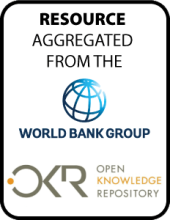Land Library Search
Through our robust search engine, you can search for any item of the over 73,000 highly curated resources in the Land Library.
If you would like to find an overview of what is possible, feel free to peruse the Search Guide.
/ library resources
Showing items 1 through 9 of 250.Le Togo a connu une forte croissance économique dont la poursuite devra être soutenue par l’amélioration du secteur foncier. La croissance économique de plus de 5% annuellement depuis 2009 est parmi les meilleurs du continent.
In January 2019, Uzbekistan started a new farm restructuring1. It is said to seek to optimize the use of farmland by increasing the size of farms producing wheat and cotton, reallocating land to more efficient farmers and even clusters, and improving crop rotation options.
Globalisation and urbanisation trends in developing countries present both opportunities for growth and development on one hand while contributing to the complex myriad challenges of managing urbanisation on the other hand. Cities and urban areas play a critical in the development of a country.
This paper describes the development of a Land Information Management System (LIMS) for County Governments in Kenya. In the new Constitution 2010, devolution of some national government functions and formation of county governments was provided for.
Cities in Sub-Saharan Africa are experiencing rapid population growth. Yet their economic growth has not kept pace. Why? One factor might be low capital investment, due in part to Africa’s relative poverty: Other regions have reached similar stages of urbanization at higher per capita GDP.
The agricultural and food production sector plays a key role in fighting poverty and food insecurity in Moldova, but is facing critical challenges to modernize and integrate into the international market.
Improving the productivity of
smallholder farms in Sub-Saharan Africa offers the best
chance to reduce poverty among this generation of rural
poor, by building on the limited resources farming
Rwanda's completion, in 2012/13, of
a land tenure regularization program covering the entire
country allows the use of administrative data to describe
initial performance and combine the data with household







